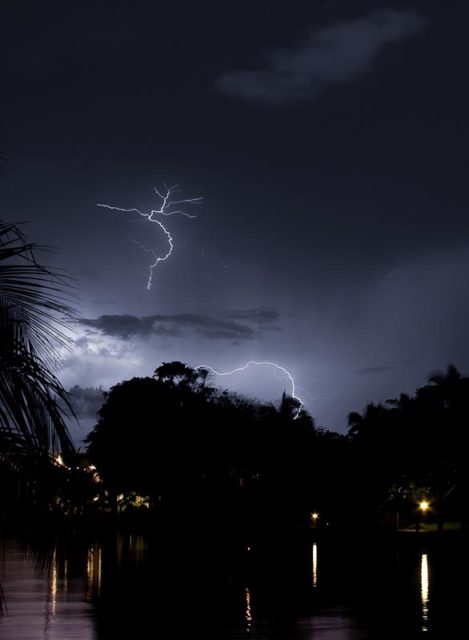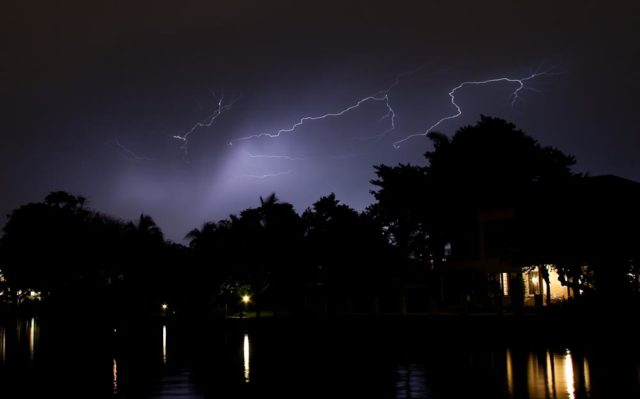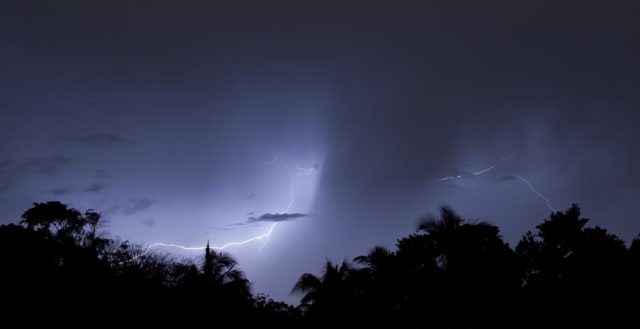Night Sky Lightning
Lightning is one of those beautiful, powerful and dangerous forces of nature that can make a wonderful photograph if your luck holds and the gods favor you. Good lighting photography is one of the few areas that garners serious awe and respect from me due to the total randomness of the subject. In almost every other area of photography it’s possible to can setup or at least encourage a situation that is conducive to maximizing your chances at capturing the perfict moment. Lighting, in my experience is not one of those.
Before you can even get started, conditions have to be just right. You need an active thunderstorm that’s just the right kind, in just the right position at just the right time. Too many clouds and you never get distinct bolts, not enough and there isn’t enough activity to make it productive. It also has to be the right distance away, if it’s too close it’s not safe to be outside and given my experience with thunderstorms you’re probably already in the rain.
After you’ve got a storm, everything you do is about maximizing the chances of getting a good shot. This is one place where working after dark helps, as it allows much longer exposures. In addition to that a moderately wide angle lens is useful (these were shot at 28mm and cropped down after the fact) to cover as much of the active sky as possible.
 None of this is an easy feat. This summer in south Florida, I’ve seen less than a handful of storms that produced conditions suitable for lightning photography. Of them two have produced reasonably good images.
None of this is an easy feat. This summer in south Florida, I’ve seen less than a handful of storms that produced conditions suitable for lightning photography. Of them two have produced reasonably good images.
Setup and preparedness I find to be key for lighting photography. Though I can’t offer much in the way of guidance, you really need to develop a feel for the size, distance and activity of each storm. The lighting bolts themselves can vary in intensity from very bright to faint wisps, and catching the faint details without being overwhelmed by brighter bolts is challenging. I’ve had the most success with my camera set to ISO 100 and my lens stopped down to f/8 or so. I use bulb mode and a cable release to control my shutter speeds with exposures ranging anywhere from as little as 5 secondsand as much as 1 minute.
It should go with out saying that a tripod is necessary, and this is one of those situations where mirror lockup may be a good idea. However the necessity of mirror lockup in this case varies. On my EOS 1D Mark 3, I’ll set custom function 3-15 to option 2, “Enabled, Down with Set” which will keep the mirror locked up for the duration of shooting including the time between frames. On a smaller format camera, like my EOS 40D, that lacks that setting and has a smaller lighter mirror and given the extremely long exposures I’m making, I’ll skip mirror lockup entirely.
As I said, there’s a lot of luck involved in being in the right place at the right time to get a great lighting shot. Also remember, that while the lightning is the main subject, all the rules of landscape photography still apply. That means remembering your foregrounds and the composition of major scenic elements in your image as well.


Comments
Wow, great images and tips. We’ve had some killer summer storms. If there weren’t bars on my windows I’d give this a try (security bars, not prison bars).
So what, you just keep shooting until you get it?
More or less.
You have basically 2 choices either spend $$$ for a lightning trigger or just keep shooting frames and delete the non-lightning shots when you’re done. In either case, pointing in the right direction and having the right conditions all comes down to luck though.